"CAMERA POP. Photography in the Pop Art of Warhol, Schifano & Co."
curated by Walter Guadagnini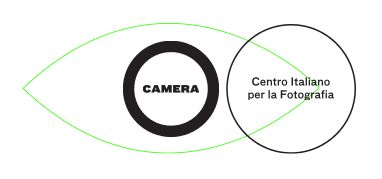
Via delle Rosine 18, 10123 Torino
+39.011.0881150 e-mail:This email address is being protected from spambots. You need JavaScript enabled to view it.
Andy Warhol, Robert Rauschenberg, Jim Dine, Ed Ruscha, Joe Goode, Ray Johnson, Rosalyn Drexler, Richard Hamilton, Peter Blake, Allen Jones, Joe Tilson, David Hockney, Gerald Laing, Derek Boshier, Sigmar Polke, Wolf Vostell, Mimmo Rotella, Michelangelo Pistoletto, Franco Angeli, Umberto Bignardi, Gianni Bertini, Claudio Cintoli, Sebastiano Vassalli
curated by Walter Guadagnini

Centro Italiano per la fotografia
Via delle Rosine 18, 10123 Torino
+39.011.0881150 e-mail:
21 September, 2018 > 13 January, 2019
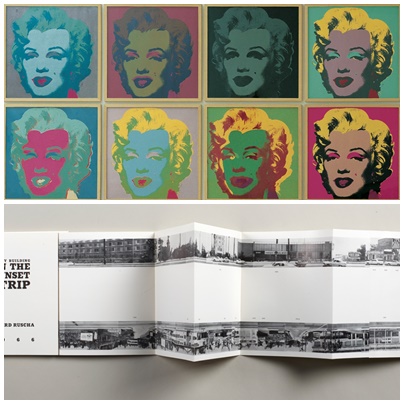
|
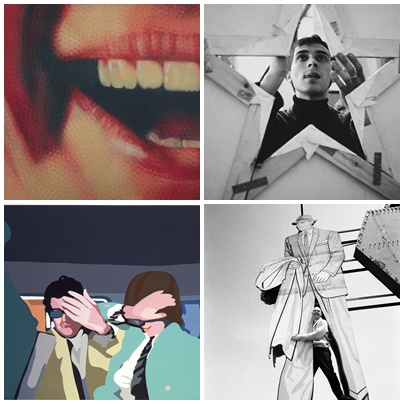
|
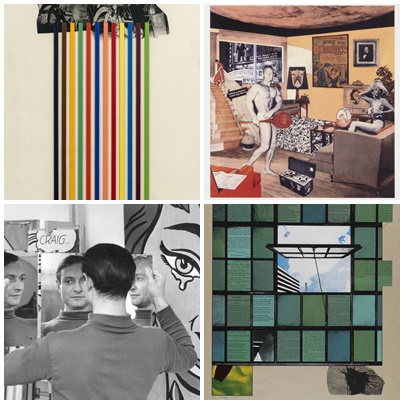
|

|
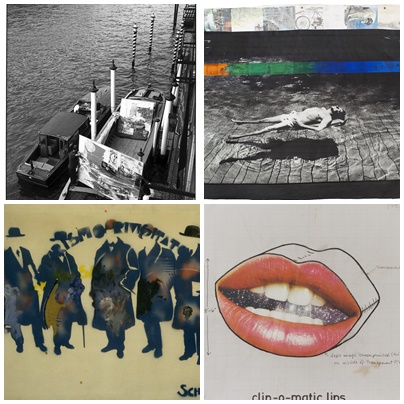
|
Torino. “CAMERA POP. La fotografia nella Pop Art di Warhol, Schifano & Co” from 21 September to 13
January at CAMERA – Centro Italiano per la Fotografia, will provide the chance to admire a truly breathtaking
sequence of works: 150 works including paintings, photographs, collages and graphic works,
tracing the history of reciprocal influences between photography and Pop Art, the movement that
changed the course of art and culture in the 1960s.
“Pop Art was a worldwide phenomenon which exploded in the 1960s in the United States and in Europe before spreading quickly to the rest of the world,” as Walter Guadagnini observes, curator of the exhibition and Director of Camera,” which revolutionised the relationship between artistic creation and society, registering current events in a neutral fashion, photographically so to speak, drawing on the same models as mass communication for the creation of artworks. In this sense, for Pop artists, photography was not only a source of inspiration, but a genuine working tool, a key part of their research.”
The exhibition starts off with the famous collage Just what is it that makes today’s homes so different, so appealing? by Richard Hamilton, considered the first Pop artwork in history, and which to all effects is a photographic collage. Likewise, the best known representative of this movement in Italy, Mario Schifano, always worked through and with the photo camera.
The photographs that portray the most powerful icons of the ’60s themselves became Pop works and icons: the most famous example is the image of Marilyn Monroe by Warhol, of which the historical portfolio of ten large-scale images (1967) will be on show in the exhibition, highlighting how Pop Art owes a key part of its nature and much of its success to photography. Warhol’s Marilyns in fact started out from a photograph, just like all the other works by the Pittsburgh-born genius. The same goes for the various versions of Brigitte Bardot by Gerald Laing, highlighting the contemporary use of various media, from photography to drawing to printing.
Looking to Italy, the splendid canvas by Rotella titled Divertiamoci (‘Let’s Have Fun’), based on a photograph and reproduced mechanically, represents reality as seen from a car window. Ugo Mulas’s photography documents the historic Venice Biennale in 1964 and the studios of the New York Pop artists, and in particular that of Andy Warhol. Around forty shots, some of which virtually unseen, tell of one of the highest moments in the relationship between photography and Pop Art, on the edge between documentation and creation. Going back to the artists, Michelangelo Pistoletto, in a surprising manner, brings the spectator directly into the work, with his mirrors to which photography confers a paradoxical surplus of adherence to reality. And so the splendid figure of the Ragazza che cammina (‘Girl Walking’, 1966), from the Intesa Sanpaolo Collection, becomes part of the environment just and we become part of the work.
A broad section of the exhibition will also be dedicated to the concept of reproduction, of an art based on the idea of a tool like the camera, recognised – and contested – ever since its origins by virtue of its mechanical nature. The camera renewed the way of seeing the world, and the world has since been known and conceived through photographic reproductions; Pop artists drew on this imagery and this practice in order to be truly contemporary. This was the society of mass consumption and mass imagery, in which photography had a central role to play. In this section, we may find some of the precursors of Pop Art: Robert Rauschenberg first and foremost, by whom an exceptionally large canvas produced in tandem with the Italian photographer Gianfranco Gorgoni will be on display.
Once again, Warhol’s figure returns through the presence his favourite photographic medium: the Polaroid. It was not just the photographs produced – those images that he needed in order to then produce his portraits of the protagonists of the Jet Set of the day – but also the very object, the machine, the camera, dedicated to a great photographer like Mimmo Jodice, who was documenting the presence of the American maestro in Naples.
“The exhibition, curated by Walter Guadagnini, a great expert on Pop Art as well as on photography,” concludes the President Emanuele Chieli, “is very much part of the series of great exhibitions held by CAMERA, and follows on from highly successful previous events, such as the exhibitions ‘L’Italia di Magnum’ (2016) and ‘Arrivano i Paparazzi!’ (2017): investigative shows that set out to analyse and examine a particular historical moment through the study of a movement or of a photographic style, at the same time illuminating the artistic and the social aspects. This exhibition, just like the previous ones, thus offers various levels of interpretation and investigation, which I am certain visitors will have the chance to grasp and appreciate.”
“Pop Art was a worldwide phenomenon which exploded in the 1960s in the United States and in Europe before spreading quickly to the rest of the world,” as Walter Guadagnini observes, curator of the exhibition and Director of Camera,” which revolutionised the relationship between artistic creation and society, registering current events in a neutral fashion, photographically so to speak, drawing on the same models as mass communication for the creation of artworks. In this sense, for Pop artists, photography was not only a source of inspiration, but a genuine working tool, a key part of their research.”
The exhibition starts off with the famous collage Just what is it that makes today’s homes so different, so appealing? by Richard Hamilton, considered the first Pop artwork in history, and which to all effects is a photographic collage. Likewise, the best known representative of this movement in Italy, Mario Schifano, always worked through and with the photo camera.
The photographs that portray the most powerful icons of the ’60s themselves became Pop works and icons: the most famous example is the image of Marilyn Monroe by Warhol, of which the historical portfolio of ten large-scale images (1967) will be on show in the exhibition, highlighting how Pop Art owes a key part of its nature and much of its success to photography. Warhol’s Marilyns in fact started out from a photograph, just like all the other works by the Pittsburgh-born genius. The same goes for the various versions of Brigitte Bardot by Gerald Laing, highlighting the contemporary use of various media, from photography to drawing to printing.
Looking to Italy, the splendid canvas by Rotella titled Divertiamoci (‘Let’s Have Fun’), based on a photograph and reproduced mechanically, represents reality as seen from a car window. Ugo Mulas’s photography documents the historic Venice Biennale in 1964 and the studios of the New York Pop artists, and in particular that of Andy Warhol. Around forty shots, some of which virtually unseen, tell of one of the highest moments in the relationship between photography and Pop Art, on the edge between documentation and creation. Going back to the artists, Michelangelo Pistoletto, in a surprising manner, brings the spectator directly into the work, with his mirrors to which photography confers a paradoxical surplus of adherence to reality. And so the splendid figure of the Ragazza che cammina (‘Girl Walking’, 1966), from the Intesa Sanpaolo Collection, becomes part of the environment just and we become part of the work.
A broad section of the exhibition will also be dedicated to the concept of reproduction, of an art based on the idea of a tool like the camera, recognised – and contested – ever since its origins by virtue of its mechanical nature. The camera renewed the way of seeing the world, and the world has since been known and conceived through photographic reproductions; Pop artists drew on this imagery and this practice in order to be truly contemporary. This was the society of mass consumption and mass imagery, in which photography had a central role to play. In this section, we may find some of the precursors of Pop Art: Robert Rauschenberg first and foremost, by whom an exceptionally large canvas produced in tandem with the Italian photographer Gianfranco Gorgoni will be on display.
Once again, Warhol’s figure returns through the presence his favourite photographic medium: the Polaroid. It was not just the photographs produced – those images that he needed in order to then produce his portraits of the protagonists of the Jet Set of the day – but also the very object, the machine, the camera, dedicated to a great photographer like Mimmo Jodice, who was documenting the presence of the American maestro in Naples.
“The exhibition, curated by Walter Guadagnini, a great expert on Pop Art as well as on photography,” concludes the President Emanuele Chieli, “is very much part of the series of great exhibitions held by CAMERA, and follows on from highly successful previous events, such as the exhibitions ‘L’Italia di Magnum’ (2016) and ‘Arrivano i Paparazzi!’ (2017): investigative shows that set out to analyse and examine a particular historical moment through the study of a movement or of a photographic style, at the same time illuminating the artistic and the social aspects. This exhibition, just like the previous ones, thus offers various levels of interpretation and investigation, which I am certain visitors will have the chance to grasp and appreciate.”
Timetable:
Monday 11am–7pm
Tuesday closed
Wednesday 11am–7pm
Thursday 11am–9pm
Friday 11am–7pm
Saturday 11am–7pm
Sunday 11am–7pm
Last admission 30 minutes before closing time
Monday 11am–7pm
Tuesday closed
Wednesday 11am–7pm
Thursday 11am–9pm
Friday 11am–7pm
Saturday 11am–7pm
Sunday 11am–7pm
Last admission 30 minutes before closing time
mpefm
ITALY art press release
Tickets:
Admission fee €10
Reduced €6 for visitors up to 26, over 65 years old and owners of Abbonamento Musei Torino Piemonte Ticket holders: Museo Nazionale del Cinema, MAO, Palazzo Madama, Borgo Medievale, GAM – Galleria Civica d’Arte Moderna, Touring Club Italiano, Forte di Bard, MEF – Museo ettore Fico, Amici della Fondazione per l’Architettura, Ordine degli Architetti member, AIACE member, Enjoy member
Free admission for children up to 12 years old
Last admission 30 minutes before closing time
Guided Tour on Saturday and Sunday at 5pm (no reservation)
Full ticket + guided tour €12
Reduced ticket + guided tour €8
Reservations for guided tours are required for groups of 10 people or more:This email address is being protected from spambots. You need JavaScript enabled to view it.
Ticket + guided tour €10


Press Office and Communications
Giulia Gaiato
This email address is being protected from spambots. You need JavaScript enabled to view it.
tel. +39 011 0881151
Press Office: Studio ESSECI, Sergio Campagnolo
tel. +39 049 663 499
This email address is being protected from spambots. You need JavaScript enabled to view it.
www.studioesseci.net
Admission fee €10
Reduced €6 for visitors up to 26, over 65 years old and owners of Abbonamento Musei Torino Piemonte Ticket holders: Museo Nazionale del Cinema, MAO, Palazzo Madama, Borgo Medievale, GAM – Galleria Civica d’Arte Moderna, Touring Club Italiano, Forte di Bard, MEF – Museo ettore Fico, Amici della Fondazione per l’Architettura, Ordine degli Architetti member, AIACE member, Enjoy member
Free admission for children up to 12 years old
Last admission 30 minutes before closing time
Guided Tour on Saturday and Sunday at 5pm (no reservation)
Full ticket + guided tour €12
Reduced ticket + guided tour €8
Reservations for guided tours are required for groups of 10 people or more:
Ticket + guided tour €10
QR of this press release
in your phone, tablet


Press Office and Communications
Giulia Gaiato
tel. +39 011 0881151
Press Office: Studio ESSECI, Sergio Campagnolo
tel. +39 049 663 499
www.studioesseci.net








